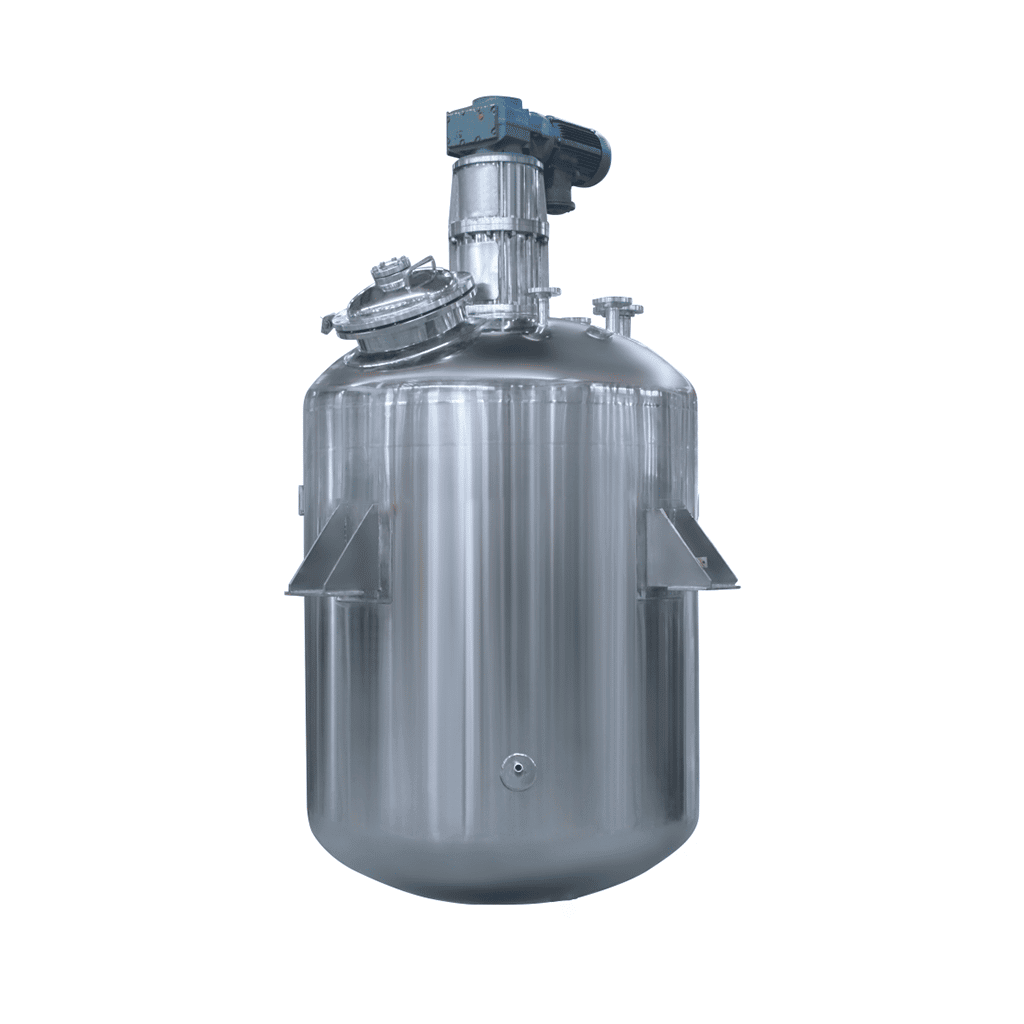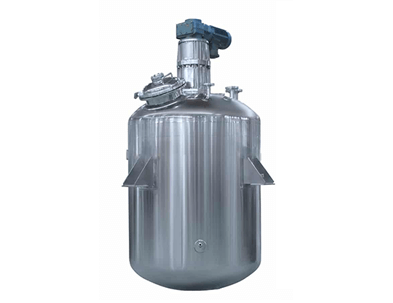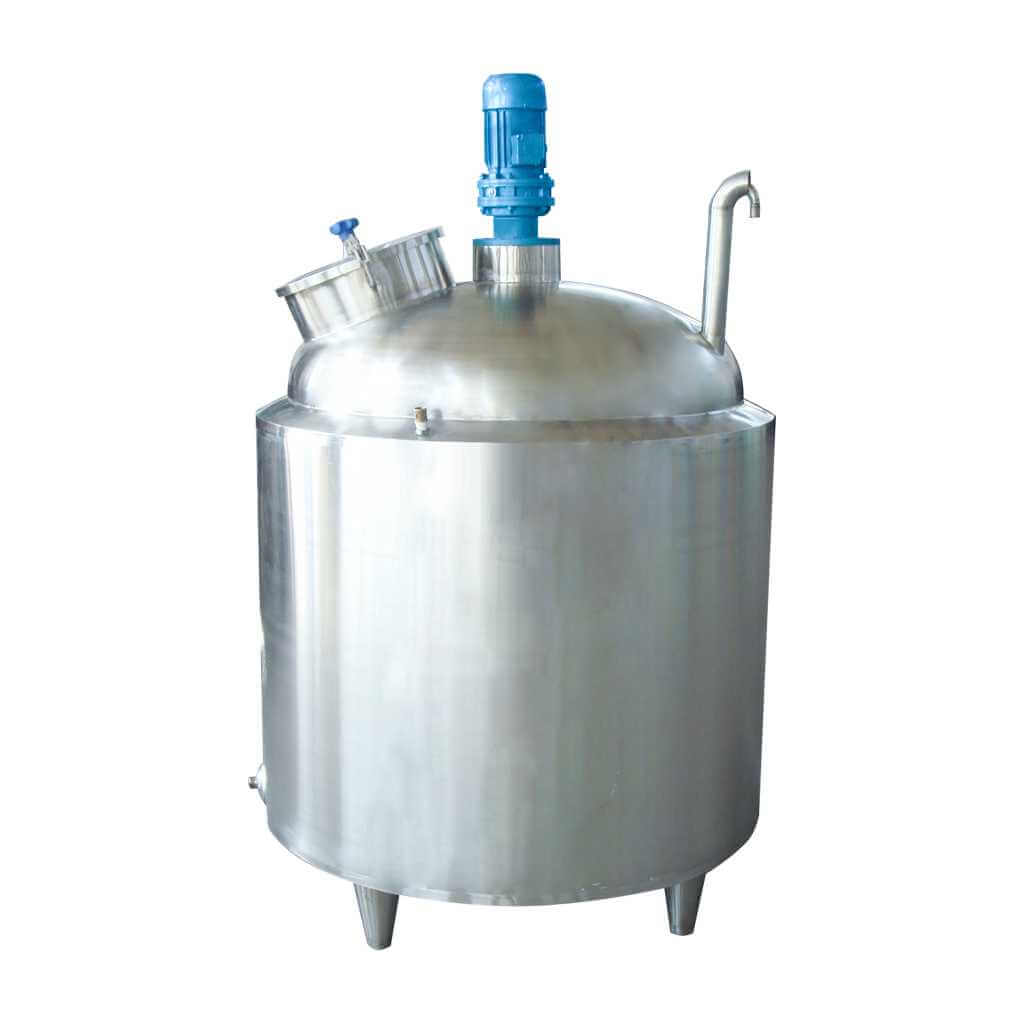
-24-1.jpg)
Stainless Steel Reactor
Stainless Steel Reactor: used in dairy products, sugar, beverages, and other fields
Material
stainless steel (316, 304)
Capacity (L)
10-10000+
Mixing system
anchor, paddle, frame and others
Heating system
electric heating, oil heating and others
A stainless steel reactor is a stainless steel container equipment. The stainless steel reactor consists of a kettle body, a kettle lid, a stirrer, a jacket, a bracket, a transmission device, a shaft seal device, etc. Materials and openings can be made according to user needs and process requirements. Stainless steel reactors are mainly used for stirring, homogenizing, and mixing storage of dairy products, sugar, beverages, food, and various pharmaceuticals.
Request a quoteStainless steel reactors play a crucial role in a wide range of industries, including chemical manufacturing, pharmaceutical production, food processing, and more. These robust vessels are valued for their exceptional resistance to corrosion, durability, and versatile applications. However, to maximize the longevity and reliable performance of stainless steel reactors, it is imperative to follow stringent care and maintenance procedures.

Understand the performance of stainless steel reactor
Before delving into the care and maintenance aspects, it is essential to understand the properties of stainless steel reactors. Stainless steel is a corrosion-resistant alloy that is primarily composed of iron, chromium, and other elements such as nickel and molybdenum. These additional elements enhance the overall durability, strength, and corrosion resistance of the stainless steel reactor.
Chromium, in particular, forms a passive layer on the surface of the stainless steel, known as chromium oxide. This oxide layer acts as a protective barrier, preventing the reactor from corroding when exposed to corrosive substances or environments. However, this passive layer can be compromised due to certain factors, including improper care and maintenance practices.
Daily cleaning procedures for stainless steel reactors
Regular cleaning is fundamental to maintaining the performance and longevity of stainless steel reactors. Here are some recommended cleaning procedures:
1.Avoid Abrasive Cleaning Agents: Use non-abrasive cleaning agents to prevent damaging the surface of the reactor. Avoid using steel wool, abrasive brushes, or harsh chemicals that could scratch or corrode the stainless steel.
2.Gentle Cleaning Techniques: Begin by rinsing the reactor with lukewarm water to remove any loose debris. Then, use a mild detergent or specialized stainless steel cleaner and a soft cloth or sponge to gently clean the surface. Always follow the manufacturer’s recommendations regarding the use of specific cleaning products.
3.Thorough Cleaning: Pay close attention to areas prone to contamination, such as welds, corners, and crevices. Use a soft brush or cotton swabs to reach these areas and eliminate any residual debris. Rinse the reactor thoroughly with clean water to remove any cleaning agents, ensuring no residue remains.

Anti-corrosion technology for stainless steel reactor
Corrosion is one of the primary concerns when it comes to stainless steel reactors. To prevent corrosion and maintain the integrity of the reactor, adhere to the following guidelines:
1.Proper Ventilation: Ensure adequate ventilation in the area surrounding the reactor to avoid stagnant air, which can cause localized corrosion. Stagnant air creates a higher concentration of corrosive agents and moisture that could compromise the reactor’s surface.
2.Regular Inspection: Regularly inspect the reactor for signs of corrosion, including discoloration, pitting, or any other irregularities on the surface. Any signs of corrosion should be addressed promptly to prevent further deterioration.
3.Prompt Spill Cleanup: Accidental spills of corrosive substances should be immediately cleaned up to prevent extended exposure to the stainless steel surface. Properly neutralize the spilled substance according to the appropriate safety regulations.
Coping with stainless steel reactor temperature and pressure fluctuations
Stainless steel reactors are designed to withstand high temperatures and pressure variations. However, extreme temperature fluctuations and abrupt pressure changes can potentially stress the material and reduce its lifespan. Some key considerations include:
1.Gradual Temperature Changes: When introducing heat or cooling to the reactor, ensure the changes are gradual to prevent thermal shock. Rapid temperature variations can cause the stainless steel to expand or contract rapidly, leading to stress fractures.
2.Maintain Compatibility: Select compatible materials for gaskets, seals, and insulation. Different materials can react differently to temperature variations, potentially causing a detrimental effect on the stainless steel reactor.
3.Pressure Relief Measures: Install pressure relief valves or systems to regulate and release excess pressure, preventing overloading and potential damage to the reactor.
Monitoring and regular maintenance of stainless steel reactors
Proactive monitoring and periodic maintenance are vital to ensuring the continued performance and safety of stainless steel reactors. Consider the following practices:
1.Regular Inspections: Conduct routine inspections of the reactor, both internally and externally, to identify any signs of wear, corrosion, or leaks. Implement rigorous inspection protocols to detect any potential issues early on.
2.Maintenance Schedules: Establish a maintenance schedule that includes tasks such as tightening connections, verifying seals, checking pressure relief valves, and inspecting heating or cooling systems. Follow the manufacturer’s recommendations and industry best practices.
3.Professional Assistance: When in doubt or when dealing with complex maintenance tasks, consult with qualified professionals who specialize in stainless steel reactor maintenance.
The care and maintenance of stainless steel reactors are crucial to ensuring their longevity, reliable performance, and safe operation. By following the recommended cleaning procedures, preventing corrosion, handling temperature and pressure changes properly, and implementing regular monitoring and maintenance practices, industries can maximize the potential of these robust vessels. Prioritizing the care and maintenance of stainless steel reactors results in enhanced operational efficiencies, production reliability, and overall safety, reinforcing their pivotal role in various industrial sectors.




